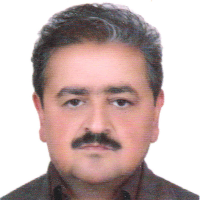Effect of superabsorbent polymer and potassium sulfate on growth, yield and yield components of sesame (Sesamum indicum L.) under water deficit conditions
Sesame (Sesamum indicum L.) is one of the important oil crops that get attentions due to its relatively high oil content and tolerance to drought. Drought is one of the most important causes of crop products reduction and can affect plant phenology, growth and yield depending on the severity, time and stage of plant development. Superabsorbent polymers are suitable materials for increasing soil water retention capacity that can provide better conditions for crop growth, especially under water deficit conditions. The importance of useing chemical fertilizers in addition to their nutritional role, is to support the crop in tolerating environmental stresses such as drought and preventing yield loss which potassium has such role in plant life and survival under stress conditions. Potassium fertilizers, especially potassium sulfate, can play an important role in reducing the negative effects of water stress. Potassium is the third main nutrient for plant growth and plays a special role in the survival of plants under environmental stress and increasing their resistance to drought, high temperatures, cold, disease, salinity, weeds and maintaining osmotic potential.
In order to investigate the effect of superabsorbent polymer, potassium sulfate and water deficit on growth, yield and yield components of sesame (Sesamum indicum L.), an experiment was conducted out on factorial arrangment based on randomized complete block design with three replications in Research Field of Agricultural College, at Birjand University in 2018. Experimental factors included three levels of irrigation (full irrigation in the whole growing season, irrigation up to 50% flowering stage and cutoff irrigation until maturity, and irrigation up to 50% capsules appearance and cutoff irrigation until maturity), potassium fertilization at three levels (No potassium application, fertilizing at optimum recommendation using 100 kg.ha-1 potassium fertilizer and fertilizing 50% higher than optimum recommendation using 150 kg.ha-1 potassium fertilizer) and superabsorbent at two levels, including no application and 100 kg.ha-1 application. The studied traits were plant height, number of lateral branches, seeds per capsule, capsule per plant, 1000-grain weight, grain yield and days to maturity.
Results showed that irrigation levels had a significant effect on measured traits except for number of lateral branches. The highest grain yield (2316.61 kg.ha-1) was obtained under full irrigation conditions and the lowest seed yield (667.89 kg.ha-1) was observed at 50% flowering cutoff irrigation. The effect of superabsorbent on all traits was significant. The results showed that superabsorbent moderated the effects of drought and improved sesame growth indices. Interaction effect of potassium and irrigation on grain yield was also significant. Although, under water deficit conditions, grain yield was significantly reduced, but potassium sulfate application under these conditions partially prevented the yield loss. Due to the role of potassium in the plant, the presence of this element in water deficit conditions can be effective in tolerance and crop yield increment. The highest number of days to maturity (124.77 day) in interaction effect of water deficit and superabsorbent was obtained from full irrigation and 100 kg/ha superabsorbent treatment and the least amount (109.55 day) was obtained from50% flowering cutoff irrigation and non-superabsorbent treatment.The increase in soil moisture caused by the use of soil moisture absorbers can increase the duration of the day to maturity.
The results showed that irrigation levels decreased sesame growth and yield. Water deficit at flowering and encapsulation stages reduced grain yield compared to full irrigation treatment. Therefore, it is necessary to irrigate the crop according to water requirement during these stages. Due to the necessity of conserving available water resources as well as optimum consumption of water, the use of superabsorbent and potassium can be effective in increasing crop yield and drought resistance. Obviously, it is necessary to provide sufficient water requirement in order to achieve higher grain yield. Therefore, it seems that hydrogels reduce the negative effects of drought by absorbing water and making it available for the crop. Potassium application in environments with different levels of drought can be considered as a practical method to reduce drought damage and prevent yield loss.
- حق عضویت دریافتی صرف حمایت از نشریات عضو و نگهداری، تکمیل و توسعه مگیران میشود.
- پرداخت حق اشتراک و دانلود مقالات اجازه بازنشر آن در سایر رسانههای چاپی و دیجیتال را به کاربر نمیدهد.




